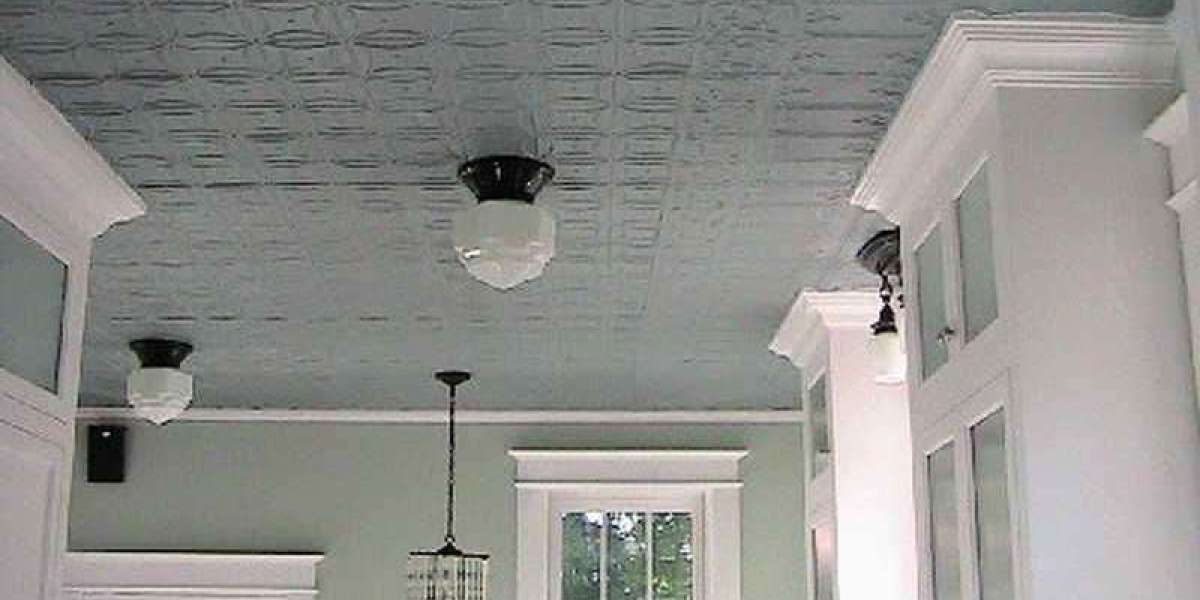The ceiling tiles market, integral to modern construction and interior design, is undergoing a complex transformation. As demand for aesthetic, soundproofing, and fire-resistant ceiling solutions grows, the industry also faces a range of significant threats. These threats—ranging from environmental regulations and raw material shortages to rising competition from alternative technologies—are challenging the market’s growth and stability. In this article, we explore the most pressing threats impacting the ceiling tiles market and what stakeholders can do to mitigate them.
Raw Material Volatility: A Growing Threat
One of the primary threats to the ceiling tiles market is the rising cost and inconsistent availability of raw materials. Ceiling tiles are typically made from mineral fiber, gypsum, PVC, metal, and wood—materials that are often subject to global supply chain disruptions. The Russia-Ukraine conflict, post-pandemic bottlenecks, and increased demand from adjacent industries have all contributed to unstable pricing and supply shortages. Manufacturers are especially vulnerable to fluctuations in mineral wool and metal prices, both of which are central to acoustic and fire-resistant tiles.
Environmental Regulations and Sustainability Pressures
As environmental awareness grows globally, regulatory frameworks around building materials have tightened. This shift poses a serious threat to traditional ceiling tile manufacturers, especially those relying on non-recyclable or non-biodegradable materials. Governments and construction firms are increasingly prioritizing sustainable building practices, including the use of green-certified materials.
The European Union’s push toward carbon neutrality by 2050 and LEED (Leadership in Energy and Environmental Design) certification requirements in North America are examples of regulatory drivers forcing manufacturers to reengineer products. While this is a long-term opportunity, in the short term it can be costly and complex, especially for smaller manufacturers lacking R&D budgets.
Rising Competition from Alternative Ceiling Systems
Another looming threat is the emergence of alternative ceiling systems. Open ceilings, baffles, stretch ceilings, and exposed mechanical designs are increasingly being adopted in modern architectural styles—especially in commercial, industrial, and creative office environments. These alternatives offer design flexibility, cost advantages, and in many cases, ease of installation.
This design trend toward minimalism and openness is siphoning demand away from traditional drop ceilings and acoustic tile systems. As preferences shift, ceiling tile manufacturers must quickly innovate or risk losing significant market share.
Labor Shortages and Installation Challenges
The construction sector as a whole is suffering from labor shortages globally, and this has impacted the ceiling tiles segment as well. Skilled labor is crucial for the installation of specialty ceiling tiles, particularly acoustic or patterned varieties. A lack of skilled professionals not only causes project delays but also raises labor costs, which in turn affects the overall affordability of ceiling tile installations.
In developing regions, where the construction sector is growing rapidly, the labor issue becomes even more pronounced. Manufacturers that fail to adapt their products for easier installation could find themselves at a disadvantage.
Technological Disruption and Lagging Innovation
The pace of technological change also represents a threat. Competitors investing in automation, digital modeling, and AI-driven design customization are moving faster than legacy manufacturers tied to traditional production techniques. BIM (Building Information Modeling) compatibility is becoming a standard expectation in construction. Companies unable to adapt their ceiling tiles for digital integration risk being excluded from major construction projects.
Moreover, the rise of 3D printing and modular construction presents a new frontier. While currently in its infancy, the ability to print custom ceiling panels on-site could eventually undercut traditional manufacturing models.
Threat from Global Economic Instability
Lastly, the ceiling tiles market is not immune to macroeconomic threats. Global inflation, interest rate fluctuations, and geopolitical tensions can significantly affect commercial construction budgets. In periods of economic slowdown, construction tends to contract, and discretionary spending on premium or decorative ceiling solutions diminishes. Developers may delay or cancel projects, directly affecting the demand for ceiling tiles.
Preparing for the Future: Risk Mitigation Strategies
To thrive despite these threats, companies in the ceiling tiles market must be proactive. Some strategies include:
Diversifying raw material sources and suppliers.
Investing in sustainable product development.
Aligning product portfolios with modern architectural trends.
Partnering with training organizations to address labor gaps.
Embracing digital tools such as BIM and CAD integration.
Exploring 3D printing partnerships or innovations in prefab tile production.
While the threats facing the ceiling tiles market are real and multifaceted, they also present a path for innovation and growth. The companies that respond with agility and foresight will be best positioned to thrive in this dynamic landscape.








